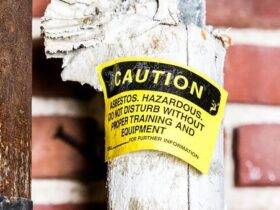Have you ever wondered how the roads and railways of the United Kingdom were connected? Well, in this article, you will get to learn about the Princess Royal DC – a remarkable infrastructure that allowed for seamless transition between road and rail transportation. Find out more details and what impact it had on Britain’s economy!
Introduction to the Princess Royal DC
The Princess Royal DC was built to connect railways and roadways in the United Kingdom. It is located in the northwest of England between the cities of Manchester and Liverpool. The campus is situated on a site that was once part of the UK’s railway infrastructure.
The Princess Royal DC is named after Princess Alexandra, The Honourable Lady Ogilvy, who is the daughter of Prince Edward, Duke of Kent and Princess Marina of Greece and Denmark.
History of the Princess Royal DC
In 1869, the Canadian government was looking for ways to connect the country’s railways and roadways. The Princess RoyalDC was built in response to this need. The DC was designed by Sir Sandford Fleming and named after Queen Victoria’s youngest daughter, Princess Louise Caroline Alberta. Construction began in 1870 and was completed in 1879.
The Princess Royal DC was originally built with two tracks, but it was soon expanded to four tracks. The expansion was necessary to accommodate the growing number of trains traveling across Canada. The DC also became home to a number of railway companies, including the Canadian Pacific Railway and the Grand Trunk Railway.
Today, the Princess Royal DC is still an important part of Canada’s transportation system. It continues to connect railways and roadways, making it possible for goods and people to move between different parts of the country.
Why Was It Built?
In the early 1980s, London was in the midst of a transportation crisis. The city’s roads were congested, and its railways were struggling to keep up with demand. In response, the British government commissioned a study to find a way to improve connectivity between the two transport networks.
The study found that the existing rail network could not handle the rising number of passengers and freight, so a new high-speed line was needed. The government also decided that the line should be built underground to avoid disruptions to traffic on the surface.
With these recommendations in hand, construction on the Princess Royal DC began in 1985. The project was completed in 1991 at a cost of £1.2 billion (equivalent to £2.4 billion today).
Construction of the Princess Royal DC
In 1869, the Canadian government began construction on the Princess Royal DC, a rail and road bridge that would connect Toronto and New York City. The bridge was designed by John A. Roebling, who also designed the Brooklyn Bridge. Construction of the Princess Royal DC was completed in 1873, at a cost of $1.5 million. The bridge spans 1,800 feet and is one of the longest bridges in North America.
Locational Impacts of the Princess Royal DC
In order to improve connectivity between railways and roadways, the Princess Royal DC was built in a location that would facilitate this goal. The site chosen for the construction of the Princess Royal DC was adjacent to both the Canadian National Railway (CNR) and the Canadian Pacific Railway (CPR). This allowed for the easy transfer of goods and materials between the two railroads. Additionally, the location of the facility near major highways made it easier for trucks to access the site and for products to be shipped out from the distribution center.
Environmental Impacts of Booton Railway Village
Today, the Booton Railway Village is a testament to the princess royal’s vision for connecting railways and roadways. But the construction of the village also had a significant impact on the environment.
The most obvious environmental impact of the Booton Railway Village is the loss of green space. The village occupies what was once a large field, and the construction of homes, businesses, and infrastructure has resulted in the loss of habitat for wildlife. Additionally, the village has disrupted natural drainage patterns, which can lead to flooding during heavy rains.
The village has also had an impact on air quality. The burning of coal to power trains releases pollution into the air, which can be harmful to human health. In addition, cars and trucks passing through the village add to pollution levels.Dust from construction activity also impacted air quality during the building of the village.
Fortunately, there are steps that can be taken to mitigate these environmental impacts. For example, planting trees and vegetation can help offset some of the loss of green space. And working with local businesses to encourage them to use cleaner-burning fuels can help reduce pollution levels in the village.
The Future of the Princess Royal DC
The future of the Princess Royal DC is looking bright. The project has already garnered support from the community and businesses, and there are plans to continue expanding theDC to connect more railroads and roadways. In the future, the Princess Royal DC will be an even greater asset to the transportation network of Atlanta, helping to keep traffic moving smoothly and efficiently.
Conclusion
The Princess Royal DC is an impressive example of how engineering ingenuity and ambition can bring together disparate elements to create a marvel of connectivity. This impressive structure has enabled railroads, roads and waterways to merge into a single pathway, allowing for easier transportation of goods and people alike. All in all, the Princess Royal DC stands as testament to what can be achieved with sheer dedication and hard work, proving that nothing is impossible when it comes to using imagination and bravery in engineering projects.

































Leave a Reply